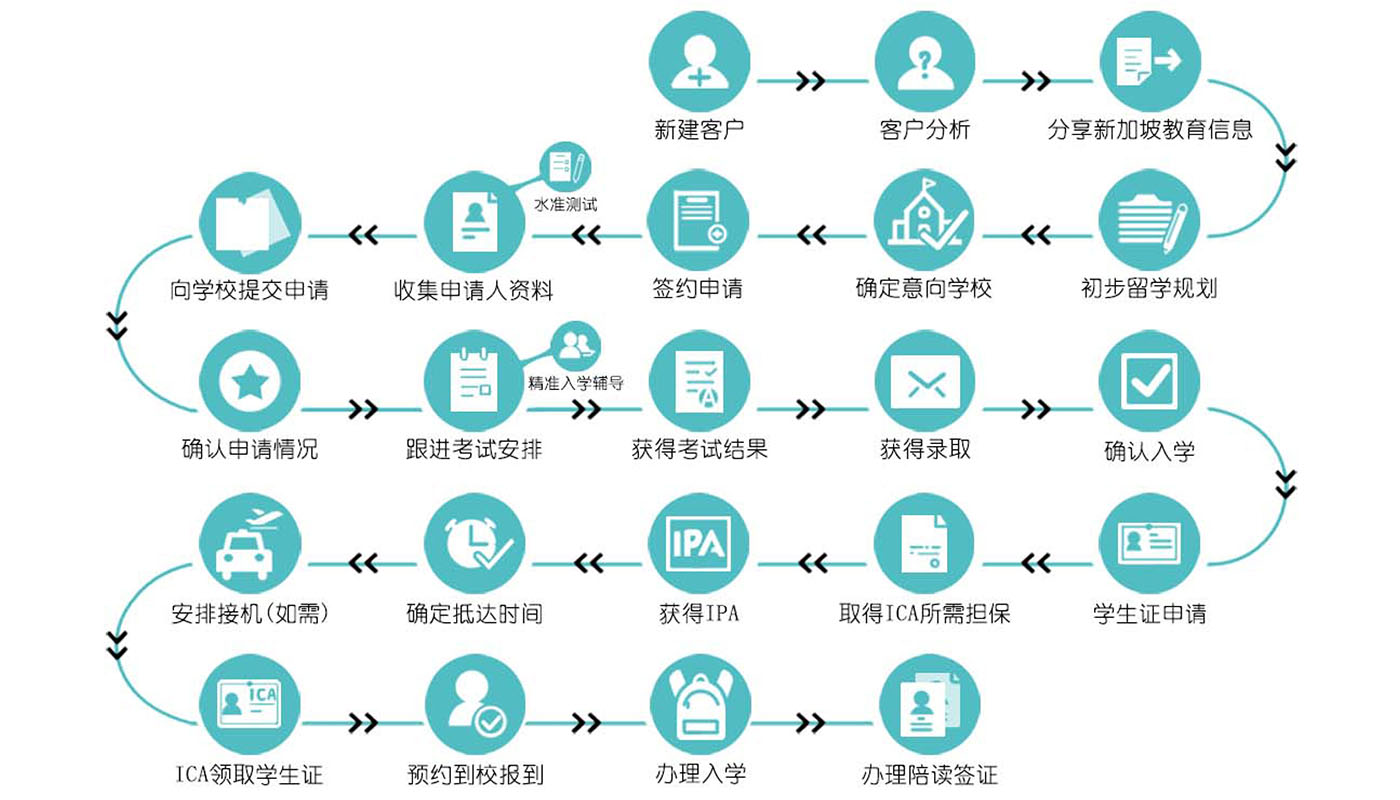Study Abroad
Singapore K12 Study Abroad Solutions
Serving people from K-12 to higher education, helping families with various needs achieve their education goals for studying abroad in Singapore. We will integrate the entire link of studying abroad from application to landing in school, and provide one-stop service so that there are no more “pitfalls” in studying abroad. Little Life uses efficient and professional services to eliminate the confusion and anxiety caused by information asymmetry among students and parents.
International School
01
International schools in Singapore offer a diverse curriculum system, of which IB courses account for the majority, but there are also American courses, Australian courses, etc. The knowledge learned is quite extensive. If the child has the idea of studying in other countries, there is no need to directly connect. Worry about not being able to keep up. International schools in Singapore that offer IB courses include: United World College of Southeast Asia, Canadian International School, Stanford International School in the United States, Australian International School, Laish International School, etc.
In addition, there are AP courses. AP is the main reference standard for admissions to American colleges and universities. Moreover, the school teaching in the AP system is in line with American primary and secondary schools, and the adaptation period for students to transfer or advance to the United States is shorter. International schools in Singapore that offer AP courses include: Stanford American International School, Singapore American International School, etc.
If you want to apply to prestigious British universities, such as Cambridge, Oxford and other similar British universities, the IGCSE course test scores are one of the important references for application. International schools that offer IGCSE include Laish International School, St. Joseph’s International School, and Tanglin Trust International School.
Government School
02
Singapore government primary and secondary schools follow the British-style teaching curriculum, with 6 years of primary school and 4 years of secondary school.
International students entering Singapore government primary and secondary schools must first take the Admissions Exercise for International Students (AEIS). International students applying for grades 2-5 can apply for the mathematics test after their English CEQ scores meet the standards. However, primary school students are about to graduate from sixth grade, so they are not allowed to take the AEIS entrance exam. The age for secondary school registration cannot exceed 16 years old. In addition, if the results of this AEIS exam are not satisfactory, you can also take the AEIS supplementary exam-S-AEIS exam. The exams are held in September and February of the following year, and those who pass the exam will be assigned to schools nearby by the government.
After attending a government school in Singapore, you can continue along the Singapore education system, from primary school entrance examination, O level, A level, all the way to university, which is equivalent to our elementary school to junior high school, high school entrance examination, college entrance examination, and entering university.
Entry Requirements:
Elementary school: aged 7-12 years old, apply for the AEIS/S-AEIS mathematics test with qualified CEQ scores.
Middle School: Those aged 12-16 years old can directly apply for the AEIS/S-AEIS mathematics and English exams.
Private School
03
There are 2 private schools in Singapore, namely St. Francis Wesleyan Church School and Sanyu Primary and Secondary School. For many students who want to go to Singapore immediately, this is a good choice. The admission threshold is low and it is okay. When applying for an accompanying student visa, as long as the school has a quota, you can pass it without passing the AEIS exam.
Students of Singapore’s Sanyu Primary and Secondary Schools can also take the AEIS exam while studying in school. Graduates can take the graduation entrance exams, PSLE exams and Cambridge O-level exams organized by the Ministry of Education just like students in Singapore government primary and secondary schools. In addition, international primary school students with excellent grades can take the PLSE exam like local students and have the opportunity to enter prestigious local junior high schools.
Since the curriculum of Sanyu School is consistent with that of Singapore government public primary and secondary schools, if students are unwilling to take the AEIS exam, they can study at Sanyu and prepare for the AEIS exam at the same time! as a transitional stage. The end result is the same.
Entry Requirements:
7-16 years old, pass the entrance examination.
Comparison of Singapore K12 Study Abroad Solutions
Local Development Plan
Program Features:
- Great cost saving, best value for money
- Less competitive
- Transfer option more flexible
- Language adaptation buffer period relatively long
School Recommendation:
San Yu Adventist School, St Francis Methodist School, Global Indian International School (GIIS), One World International School, Middleton International School etc.
Immigration Training Program
Program Features:
- Low cost
- High competitive, requires strong language and learning foundation
- Strong language environment, localization development is easier
- All-round development, good advantages of studying in prestigious schools in Singapore
School Recommendation:
Government School (Access to local schools through AEIS, O-level, A-level Preparatory School)
Higher Education in Europe and U.S
Program Features:
- High cost
- High competitive, personalized, targeted exam preparation
- Diverse, international, and strong language environment
- All-round development, good advantages of studying in prestigious international schools
School Recommendation:
UWC South East Asia, Dulwich College Singapore (DCS), British Tanglin Trust School (TTS), Singapore American School (SAS), Nexus International School Singapore (NIS). View more
Specific applications can be personalized and analyzed based on future development plans and current development levels.
How It Works?

